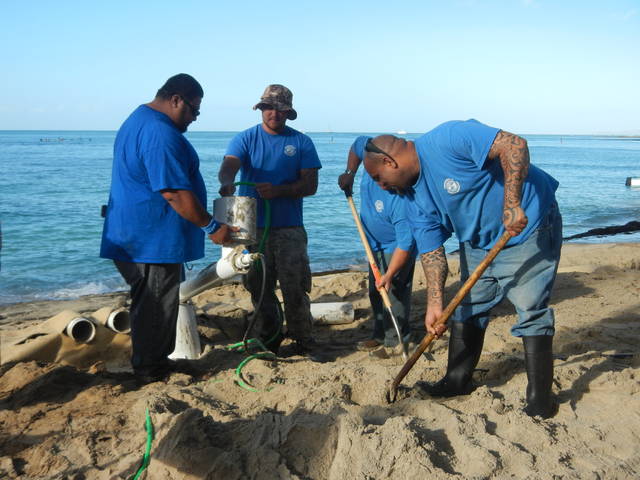City installs ‘sand mattress’ to combat erosion at Kuhio Beach


CINDY ELLEN RUSSELL / CRUSSELL@STARADVERTISER.COM
Mayor Kirk Caldwell provided an overview of the sand stabilization project Sunday at Kuhio Beach Park in Waikiki. Last week a polypropylene “sand mattress” was buried under sand behind the exposed concrete in the middle of the picture. The project is an effort to mitigate the sand erosion where the Waikiki Tavern once stood.

COURTESY CITY OCEAN SAFETY AND LIFEGUARD SERVICES DIVISION
On the North Shore, erosion has caused an Ocean Safety storage room to teeter over a 20-foot drop at Sunset Beach.

COURTESY CITY AND COUNTY OF HONOLULU
Department of Parks and Recreation and Geotextile Solutions workers installing the sand mattress.

COURTESY CITY AND COUNTY OF HONOLULU
Department of Parks and Recreation and Geotextile Solutions workers installing the sand mattress.






Select an option below to continue reading this premium story.
Already a Honolulu Star-Advertiser subscriber? Log in now to continue reading.